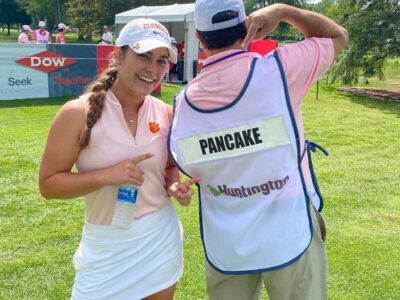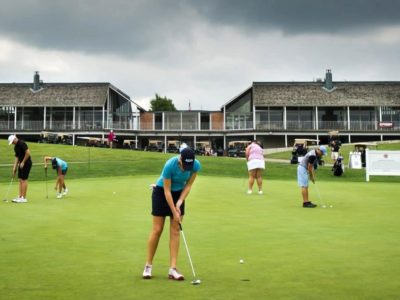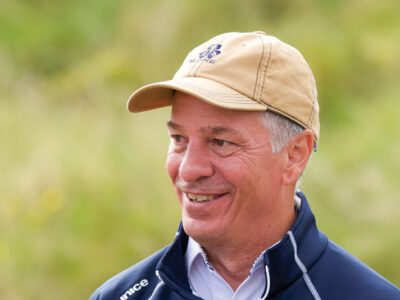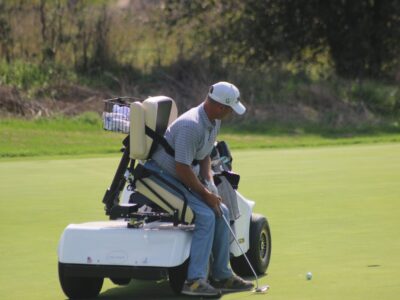Golf in Indiana is unique and that has served Indiana golfers very well for 50 years now.
“Whether I’m at a PGA meeting or a meeting of Allied Golf Association leaders (AGA), we are always the odd ones out,” said Mike David, who has served as the Executive Director of Indiana Golf for 32 years. “I’m kind of surprised that more areas have not followed our lead. I think the model has benefited Indiana Golf greatly.”
Indiana is one of a very small number of locations that have a “joint” working relationship between both the amateur golf association, Indiana Golf Association (IGA) and the PGA Section. And this year, that relationship turns 50. Only two other areas of the country share the same type of relationship, Sun Country (New Mexico) and Kentucky. Neither which have been around for as long as the IGA-PGA.
The idea to create a cohesive working organization between the Indiana Golf Association and the Indiana PGA was a joint decision by the Officers of both organizations in 1972.
Prior to joining forces, the Indiana Golf Association and the Indiana Section PGA were operating on two different handicap systems. The Association used the system recognized by the USGA and the PGA was using the Schaffer & McCorkle system. One of the main reasons that combining organizations made sense, was to consolidate handicapping – and therefore consolidate revenue.
“It made no sense to have two separate sources of handicaps,” said Boyd Hovde, past Indiana Golf Association President and one of the leaders of the push to unite the IGA and the PGA. “By consolidating, it produces more revenue for both organizations.”
“It made sense from a promotion standpoint to have one organization in charge of all events,” said the late Mickey Powell, who was a Past President of the PGA of America and one of the founders of the IGA-PGA. “It created more competitive tournaments, more consistency with management, a better financial situation, and an overall stronger organization. And there became a general understanding among both organizations, and an appreciation among amateurs and professionals that wasn’t there before.”
Fifty years later, the model is stronger than ever. Indiana Golf not only includes the IGA and PGA but also the Indiana Golf Foundation including the First Tee – Indiana, the Indiana Women’s Golf Association and the Indiana Golf Course Superintendents Association.
While there are 59 Allied (amateur) golf associations who are licensed by the USGA, and 41 PGA Sections that serve as “branch” offices for the PGA of America, only the three mentioned earlier have a formal working relationship.
“In other states, the pro and amateur bodies often compete for sponsorships, publicity and preferred tournament dates and sites; that has not been the case here”, said IGA Past President and Indiana Golf Hall of Famer, Kent Frandsen.
Former PGA of America President, Ted Bishop, agrees that the relationship of golf organizations in Indiana has served the golfing population well.
“The result of this marriage between the Indiana amateurs and professionals has benefitted anyone who ever picked up a club”, said Bishop. “There have been more playing opportunities for everyone, particularly our juniors who now have multiple tours to choose from based on their skill level. Hundreds of Indiana kids have been able to play college golf because of the junior golf opportunities they were afforded.”
The junior golf opportunities Bishop alludes to include not only the competitive Indiana Junior Golf Program, which has been in existence since 1987, but also one of the largest and most respected First Tee Chapters in the country.
“There are now so many programs geared at young people,” said Hovde. “And we are creating great golfers. Back when Jack Nicklaus and Arnold Palmer were playing golf, there were only 12 guys that could win. Now there are 50. And that’s because we are succeeding in the area of junior
golf.”
Indiana is not only succeeding but flourishing when it comes to junior golf. In 1987, the Junior Golf Program began with 200 participants and 10 statewide events. Today, it consists of three tours, nearly 1,300 participants and over 75 annual events.
Additionally, over 350 program alums are currently on collegiate golf rosters; over 25 alums have advanced to the Korn Ferry Tour, PGA Tour, Epson Tour or LPGA Tour; and three alums are USGA Champions.
“There is no doubt that our junior golf programs have benefited tremendously from the cohesive working relationship we have here in Indiana”, said David. “Our boards have always put junior golf first and foremost in their decisions.”
“The Indiana Junior Golf Program started just as I fell in love with the game of golf,” said Bo Van Pelt, PGA Tour player and Indiana Golf Hall of Fame member. “It gave me a chance to grow up as a person and to see where my game stacked up against the best in the state. The high level of competition prepared me to play college golf at Oklahoma State and provided the foundation for me to become an All-American and to have a 17-year professional golf career. The importance of the Indiana Junior Golf Tour cannot be overstated in the effect it has had on my life.”
Junior golf in Indiana is not only about competitive opportunities. The Indiana Golf Foundation, formed in 1994, has focused its efforts not only on providing playing opportunities for Indiana youth but also using the game to instill life skills in program participants.
In 2012, largely due to the efforts of Alice Dye, the Indiana Golf Foundation had an opportunity to pull the First Tee brand under its organizational umbrella. The Foundation’s mission is ‘Teaching Life Lessons Through the Game of Golf’ – which made the First Tee, a program centered on character development and core values, a natural fit.
When the Foundation took over the administration of the First Tee – Indiana Chapter, there were two operating areas – Indianapolis and Richmond. In total, the First Tee was reaching about 6,000 kids in green grass programming and the First Tee’s National School Program.
Today, thanks to the help of generous volunteers, dedicated donors, and a passionate staff, the First Tee reaches nearly 100,000 kids statewide.
In each of these program locations, the First Tee – Indiana has a local volunteer committee that is leading the efforts to implement First Tee programs into local elementary schools, and to guarantee that the First Tee Life Skills Experience is available at green grass facilities.
During personal interviews, 78% of First Tee participants described their ability to transfer life skills through specific examples and stories. Skills including decision-making, self-management and goal-setting were consistently transferred to situations involving school, family, friends, jobs, college, career and out-of-school activities. In addition, through independent research, 73% of young people at First Tee chapters report high confidence in their ability to do well academically.
“The First Tee has been a tremendous addition to our Foundation,” said Autumn Strong, Indiana Golf Assistant Executive Director. “It perfectly encompasses our mission of ‘Teaching Life Lessons Through the Game of Golf.’”
As the years have passed, and Indiana Golf continues to thrive, its success can largely be credited to its collaborative nature – its staff, interns, volunteers, donors, and board members continue to work together for the common goal of growing the game of golf in Indiana and providing elite and competitive playing opportunities.
“Since its inception, the joint office has advanced and coordinated without favoritism the interests of its affiliated entities”, said Frandsen. “As a result, golf has simply been better in Indiana.”
“What started as a logical way to combine resources and save money has turned into a tremendous organization that is involved in almost every facet of golf in Indiana,” said David. “I have no doubt that we have accomplished so much more by working together in Indiana then we ever could have as separate organizations. I’m really surprised more states have not used this
model.”
“Indiana has been an A+,” Powell once stated. “I can’t imagine that all of the different programs would have ever existed had the IGA-PGA not joined forces. There is no question that other associations and PGA Sections are missing the boat by not working together.”
While this joint working relationship might seem unusual to many of those in the golf industry, it is simply standard practice in Indiana – and the game, and the golfers, have benefited, for 50 years!










